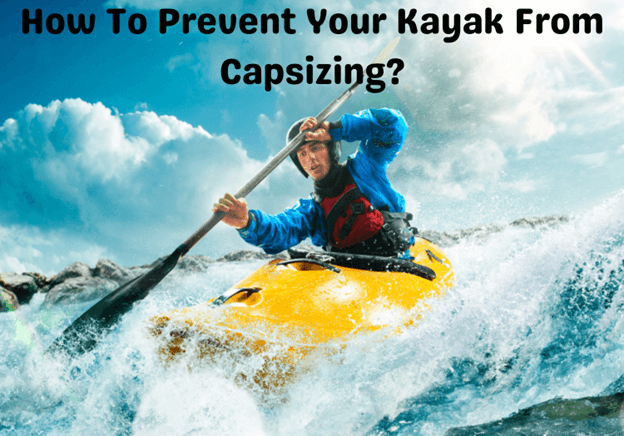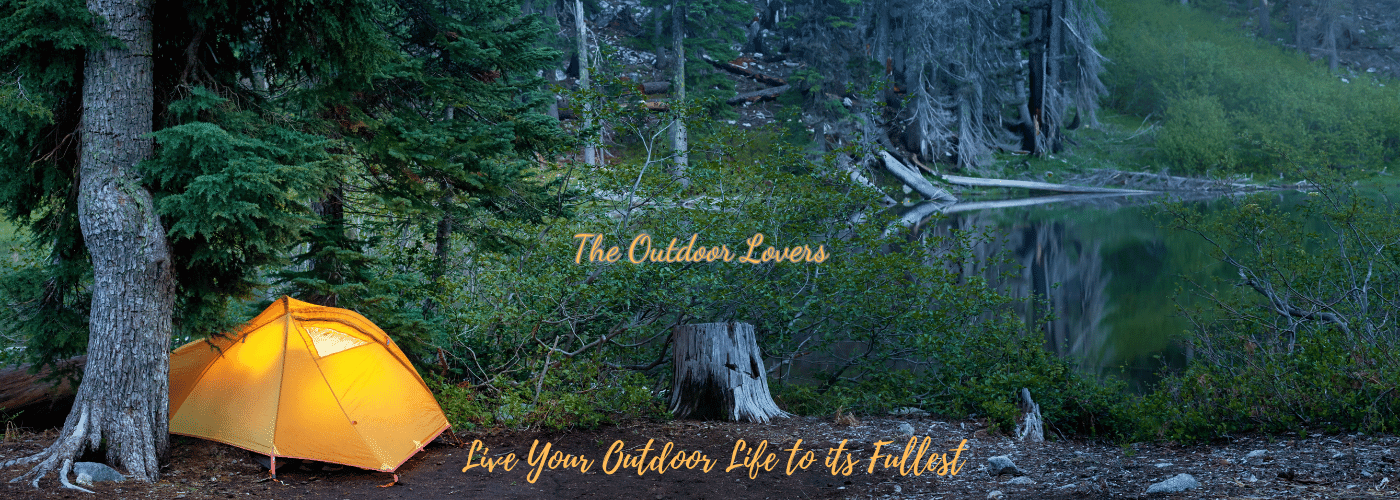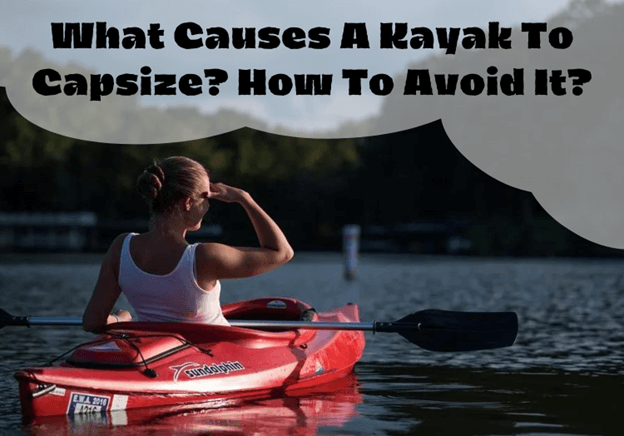Kayaking has gained popularity as a hobby and activity in many regions of the globe in recent years. There are several ways to go out on lakes, rivers, and even the ocean with a kayak, ranging from kayak fishing to whitewater kayaking. If you’re going kayaking, you’ll want to be as prepared as possible.
While you can’t always prevent a kayak to capsize, knowing what to do in the event of one protects your safety and the recovery of your goods. Learn the most common reasons for kayak capsizing, how to avoid it, what to do if your kayak capsizes, and how to prepare for this scenario.
What Does It Mean To Capsize A Kayak?
To clarify, capsizing a kayak means turning it upside down and falling off (or out) into the water. It also implies that unless leashes or straps link everything, you will lose a lot of gear to the depths.
From what we’ve seen, this is not a simple task since most kayaks, especially sit-on-top models, are built with a wide beam and a low seating position to increase stability. The longer, narrower sit-in variants may tilt quicker, although their lower sitting locations can compensate for this. Understanding what may cause a kayak to go over to prevent capsizing is essential.
What Causes A Kayak To Capsize?
understand the reasons so they may be detected and avoided. And, as mysterious as that last line was, it is absolutely something that can keep you upright when out on the sea. So, these are the most typical causes Many believe that the best approach to prevent something is to we’ve discovered for kayakers to overturn their kayak.
Standing While Fishing:
Many kayak anglers, particularly those who fly fish or throw lures for bass, like to stand while fishing. Standing on a kayak is difficult even when using a kayak built for it since you are decreasing the stability of the boat by moving your center of gravity higher.
It is OK on its own, and we’re not going to advise you not to stand. However, remember that some of the other causes listed below are more likely to create a tip if you are standing. The same may be stated about sitting on the vessel sideways.If you’re standing, colliding with a rock or tree will result in some off-balance dancing.
PS: Always wear a lifejacket when on the waters
Catching Fish:
Catching a fish was the most common cause of a flipping kayak. We move our legs one way or the other, shifting our weight to one side rather than the center.
Then, suddenly, the monster fish strikes, and as we jerk our rod and try to regain our equilibrium, we go overboard. And although it is not strictly a capsize, those standing have also experienced being pushed into the water in similar circumstances.
Removing Fish:
We often recommend keeping Kayak fishing rods at a shorter range, about 6ft. If the rod is any longer, you’ll have to either put the bulk of it behind you to avoid tripping or stretch out to get your catch.
Both will lead you to reach one way or the other, causing your equilibrium to be thrown off and perhaps flipping you over – mainly if the fish at the end is hopping a lot!
Boat Wash:
We almost fell because we watched the boat sail by – even waved to the folks aboard it – but didn’t check for the wash after they were gone. Boat wash may be strong, and there’s usually more than one wave, so if the first one knocks you off balance, the second comes before you can recover, and you tumble.
Currents:
Currents, such as tidal movement, rapids, or even waves if you’re out on the ocean, are another primary capsizing reason; however, if you’re on a lake, you generally won’t have to worry about this.
Related Articles:
- 6 Best Sit Inside Kayaks For Unforgettable Water Adventures
- 5 Best Rated Sit On Kayaks For Your Ultimate Kayaking Experience
- The Top Rated Inflatable Paddle Board For Exciting Fishing (FishSUP 126)
How To Prevent Your Kayak From Capsizing?
Unless you’re willfully flipping your kayak, you probably want to avoid capsizing at all costs. It’s not that tough, despite appearances. Use these suggestions the next time you’re out on the lake.

Check The Weather Before You Go:
Severe weather causes unfavorable circumstances for sailing. When the skies are overcast and rain is pouring, the waves are bigger and rougher, the winds are more robust, and visibility is low.
Kayaking plans should always be considered flexible. We suggest monitoring the weather at the start of your trip week, then again, a few days ahead. Start checking hourly predictions and radars about two days before you intend to go kayaking.
Make sure the weather hasn’t altered the morning of your bike. Don’t go if the predictions are not favorable.
Use A Wide Kayak:
Let’s start with the kayak you’re using to avoid capsizing. Wider kayaks provide better stability on the water, making them a good choice for avoiding capsizing. If you’re new to kayaking, start with a broader kayak until you’re comfortable with it.
Because they are more stable than other alternatives, wide sit-on-top kayaks are perfect for beginners. You may prefer more expansive boats as you acquire kayaking expertise!
Keep Your Movements Low And Centered:
Balancing your kayak is complex, and moving is considerably more difficult. Any movement might cause your kayak to rock, forcing you to tilt and even lose equilibrium.
At the same time, the evident approach is to minimize your activities while on your kayak; this may be difficult. If you have beverages or food in your storage compartment, you’ll probably have to turn around or bend forward to get to them.
To avoid rocking your kayak too much, do it at a low and central position every time you have to move around in it. To reduce unsteadiness, maintain your shoulders near the boat’s longitudinal centerline.
Evenly Distribute Weight:
Equally distributing the weight in your kayak, similar to balancing oneself, helps the boat sit more level in the water. Sit at the center of your seat, with your arms and legs adequately spread apart.
You’ll most likely be carrying gear or other stuff in your kayak. Distribute your items equally from front to back before boarding the kayak. If one end or side holds more weight, your kayak will tilt that way, making it easier to flip over.
Keep Paddling:
Consider riding a bike to help you visualize this suggestion. Maintaining upright when moving is considerably more straightforward, and kayaking holds the same. This advice is simple: keep paddling to prevent flipping.
That doesn’t imply you’ll collapse if you stop moving, and you don’t want to paddle so hard that you use all of your energy and lose out on the scenery. However, if you paddle to keep your forward motion going, you could feel more secure.
Paddle Perpendicular To Waves:
Paddling perpendicular to the waves is preferable when kayaking in the ocean or any other body of water with the potential for waves. Paddling into the waves head-on or at an angle keeps them from striking the sides of your kayak and shaking you to the point of capsizing.
If you’re new to kayaking, avoiding waves is advisable until you’ve honed your abilities and gained confidence in your kayak.
Brace Your Kayak Using The Paddle:
If your kayak begins to flip, there are a handful of methods you may use your paddle to correct the situation. Brace yourself briefly against the water so you may push off against it and gather momentum to snap your hips in another way to bring yourself back upright.
Low brace: As you flip, push the paddle down on the water.
High brace: While flipping, pull the paddle down in the water.
The primary difference between the high and low brace is the position of the paddle in your hand. To return to an upright posture, remember to gaze down and lean into the brace while swiftly snapping your hips in the other way.
Use The Right Equipment:
Adjusting your gear to a shorter alternative is a smart place to start. Still, if that isn’t an option, an excellent fishing net with an extensible handle can also help keep you upright while you pull the fish in.
Of course, if you want to stand on your kayak, ensure it has a friendly, secure standing platform suited for such activities. Last but not least, make sure you’re wearing a life jacket.
What To Do If Your Kayak Capsizes?
Despite your best efforts, you ended up capsizing in your kayak. Here are five things you should do right away after flipping into the water to save your and your fellow passengers’ lives.

Don’t Panic:
Yes, capsizing is terrifying, mainly if it happens for the first time. The more terrified you are, the more energy you can squander, shouting and flailing. Conserve your energy by keeping calm; you’ll need all the help you can get.
Assess The Condition Of Your Passengers:
You gasp for oxygen as you get your head out of the water. If you were kayaking alone, you would only have to worry about yourself. However, for those kayakers who constantly accompany a buddy or partner, you must also assess their condition.
Please inquire with your kayaking companion about their safety. If they can speak verbally to you, they’re probably OK. You’ll have to get your kayak upright entirely.
Swim over to your kayaking buddy and make sure they’re face-up above the water. If you’re in the water and don’t know how to swim, a life jacket or other personal flotation device might save your life. Many of these devices can even keep the user from floating face down. Even so, it doesn’t hurt to double-check that they’re upright, and it has the potential to save their life!
Righting Your Kayak:
In rare cases, your kayak may self-right after the additional weight is removed. Most likely, you’ll have to set it upright physically.
You need to go to the side of the kayak close to the middle, where you were sitting before it flipped over. Grab the kayak with one hand on the far side. You are not in danger of sinking since the kayak is afloat.
While holding the kayak upside down with both hands, bring it close to your body. When the kayak is within striking distance, lift your knees over the water and force them upward. The kayak should raise out of the water and flip back over.
When it comes to righting your kayak, time is essential. When your kayak is upside down for an extended period, water may leak into the different compartments and the hull.
Re-enter Your Boat:
It’s time to rejoin your kayak and continue your journey once you’ve got it upright. How you reenter your kayak will determine where you turned it over. For example, if you swim back to shore or in shallow water, you may jump back into your kayak and continue paddling. However, reentering your kayak might be more difficult if you’re in deeper water.
If you want to get back in the kayak but are worried about flipping it over, reach over the cockpit and grip the other side, and pull yourself up. You’ll need to adjust to a sitting posture after pulling yourself up onto the kayak. To maintain your equilibrium, move gently. Because there is no cockpit with sit-on-top kayaks, they are often simpler to reenter.
Drain The Water:
You will have some water in your kayak if it has been turned over for a short while(minutes). In case of a capsize, always include a kayak sponge and a small bilge pump. To begin, you would use the bilge pump to suck up water, and the kayak sponge would next be used to absorb any remaining water.
You may ride back to shore from there if you choose, but don’t rush things.
Additional Resources
If you are looking for more tutorials, walkthroughs and troubleshooting about camping and enjoying the outdoors, here are some additional posts to check out:
Conclusion:
Because of these boats’ short length and lightweight, capsizing is common. Because capsizing can be fatal in rare cases, you must balance the weight on your kayak and avoid kayaking in bad weather. Keep yourself safe out there! Thanks for reading! If you think I forgot something or if you simply want to share a story or some advice, feel free to leave your comment below. Be Safe and Happy Kayaking.!
Related Articles:

